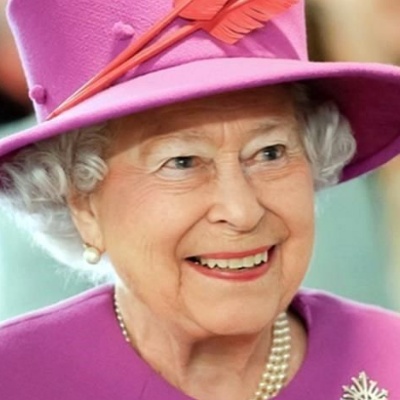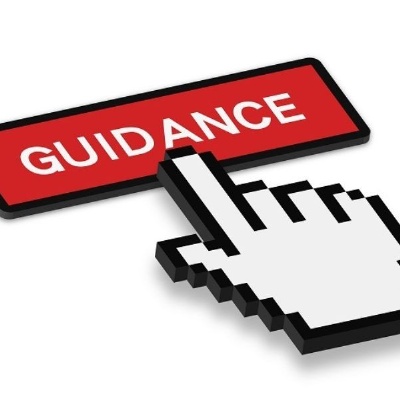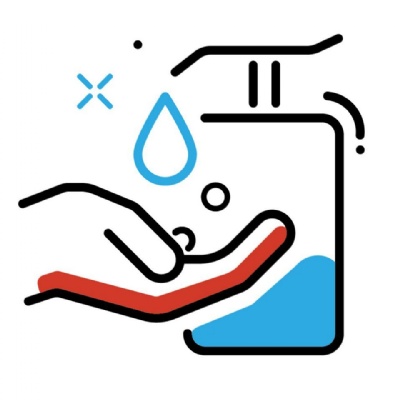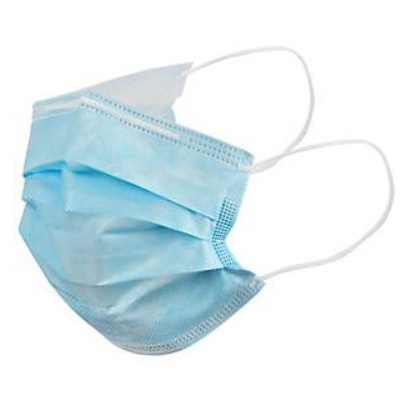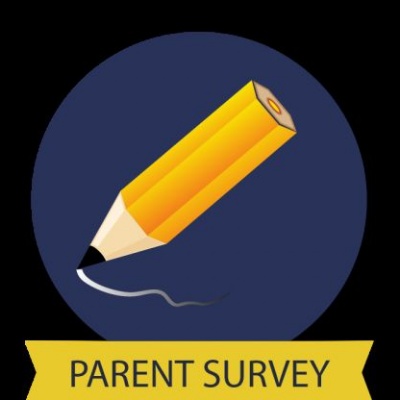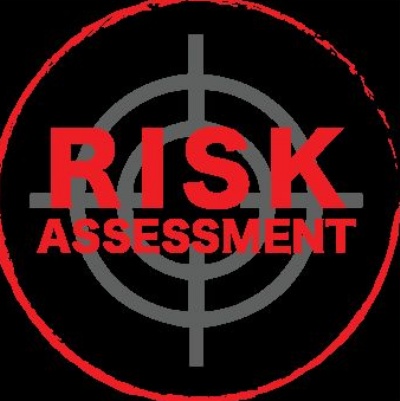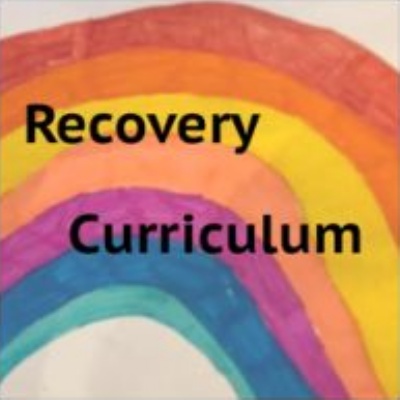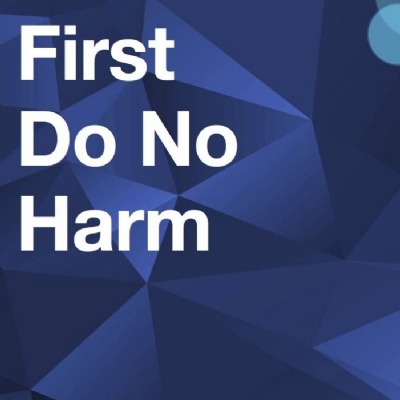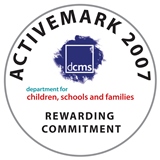COVID - 19
"When we least expect it, life sets us a challenge to test our courage and willingness to change; at such a moment, there is no point in pretending that nothing has happened or in saying that we are not yet ready. The challenge will not wait. Life does not look back."
- Paulo Coelho
I am sure this is how many of us have felt since the start of the pandemic. So many challenges have been thrown at us all, in such quick succession that it is remarkable how well so many have coped. This includes our school community. Parents, pupils, staff and Trustee’s have had to make rapid and wide reaching adjustments to keep safe and to maintain the progress of the children that we serve. I am in awe of you all, as this has been such a huge challenge which has created increased levels of anxiety, concern and trepidation but also great determination, adaptability, passion and selflessness. You continue to amaze me every day! Please use this area of our website to see information that relates to this topic. You may want to check our risk assessment, our ‘normal operating procedures’, the letters that have been shared or other information. Just like all schools, we have gone through phases of change according to the way that situation has evolved. However, our core theme of ‘do no harm’ has been used to question and check our approach at frequent intervals. Our core approach so far has relied upon: Revised daily routine protocols for staff and pupils (hand washing, entry/exit, movement etc) Enhanced cleaning on a day to day basis and when potential outbreak occurs Revised approaches to the environment-revamped classrooms, directions of travel, reducing contact points etc Being ready for a case of Covid 19 with staff or pupils Increased levels of communication, intervention and support for all parties where appropriate Communication is such an essential part of our day to day life but is even more important when faced with such a different. if you have any questions, concerns or just need to talk through some issues in connection to school and Covid 19, then please email or call us. Please note that we will be conducting some online sessions for parents in the near future. Thank you for your continued support and understanding and we will come through this difficult situation.
- Read MorePublished 12/09/22It is with great sadness, that we mourn the passing of Her Majesty Queen Elizabeth II, Britain's longest serving Monarch and Head of the Commonwealth. We pay tribute to her unwavering commitment to the people she served so faithfully for so ma
- Read More
Larwood will be closed on Monday 19th September 2022 due to the passing of HRH Queen Elizabeth II
Published 12/09/22It is with great sadness, that we mourn the passing of Her Majesty Queen Elizabeth II, Britain's longest serving Monarch and Head of the Commonwealth. We pay tribute to her unwavering commitment to the people she served so faithfully for so ma - Read More
Our Approach to Remote Learning 2021
Published 03/02/21REMOTE EDUCATION PROVISION: INFORMATION FOR PARENTS
This information is intended to provide clarity and transparency to pupils and parents or carers about what to expect from remote education where national or local restrictions require entire cohorts (or bubbles) to remain at home.
- Read More
Staff Guidance
Published 09/11/20DFE Guidance update-September 1st 2020
As noted in this morning’s training, the very late changes made by Government on Friday were not helpful or well timed. However, it is important that you are aware of advice as we are currently following this. I have cut/pasted edited highlights, which should be read alongside our risk assessment and the day to day guidance provided by Pierre.
AS ALWAYS, IF YOU HAVE QUESITONS, THEN PLEASE ASK!
Isolation procedures related to a suspected or known case of Covid:
Minimise contact with individuals who are unwell by ensuring that those who have coronavirus (COVID-19) symptoms, or who have someone in their household who does, do not attend school
Ensuring that pupils, staff and other adults do not come into the school if they have coronavirus
(COVID-19) symptoms (https://www.gov.uk/guidance/nhs-test-and-trace-how-it-works#people-who-develop symptoms-of-coronavirus) or have tested positive in at least the last 10 days and ensuring anyone developing those symptoms during the school day is sent home, are essential actions to reduce the risk in schools and further drive down transmission of coronavirus (COVID-19).
All schools must follow this process and ensure all staff are aware of it.
If anyone in the school becomes unwell with a new and persistent cough or a high temperature, or has a loss of or change in, their normal sense of taste or smell (anosmia), they must be sent home and advised to follow guidance for households with possible or confirmed coronavirus (COVID-19) infection (https://www.gov.uk/government/publications/covid-19-stay-at-home-guidance), which sets out that they should self-isolate for at least 10 days and should arrange to have a test
(https://www.gov.uk/guidance/coronavirus-covid-19-getting-tested) to see if they have coronavirus (COVID19).
If they have tested positive whilst not experiencing symptoms but develop symptoms during the isolation period, they should restart the 10-day isolation period from the day they develop symptoms.
Other members of their household (including any siblings) should self-isolate for 14 days from when the symptomatic person first had symptoms.
If a child is awaiting collection, they should be moved, if possible, to a room where they can be isolated behind a closed door, depending on the age and needs of the child, with appropriate adult supervision if required. Ideally, a window should be opened for ventilation. If it is not possible to isolate them, move them to an area which is at least 2 metres away from other people.
(This is the space in Cub, as shared with you today and highlighted in the risk assessment)
If they need to go to the bathroom while waiting to be collected, they should use a separate bathroom if possible. The bathroom must be cleaned and disinfected using standard cleaning products before being used by anyone else. (The toilet in Cub is the designated toilet for this situation. Both areas, once pupils has gone would be cleaned/closed off until cleaned)
PPE must be worn by staff caring for the child while they await collection if a distance of 2 metres cannot be maintained (such as for a very young child or a child with complex needs). More information on PPE use can be found in the safe working in education, childcare and children’s social care settings, including the use of personal protective equipment (PPE)
Summary:
If you have Covid, you must isolate for 10 days
If someone in your household (direct household only) has Covid you have to isolate for 14 days.
Face Coverings
The government is not recommending universal use of face coverings in all schools. Schools that teach children in years 7 and above and which are not under specific local restriction measures will have the discretion to require face coverings for pupils, staff and visitors in areas outside the classroom where social distancing cannot easily be maintained, such as corridors and communal areas and it has been deemed appropriate in those circumstances. Primary school children will not need to wear a face covering.
In particular, schools that teach years 7 and above may decide to recommend the wearing of face coverings for pupils, staff or visitors in communal areas outside the classroom where the layout of the schools makes it difficult to maintain social distancing when staff and pupils are moving around the premises, for example, corridors.
In primary schools where social distancing is not possible in areas outside of classrooms between members of staff or visitors, for example in staffrooms, headteachers will have the discretion to decide whether to ask staff or visitors to wear, or agree to them wearing face coverings in these circumstances.
Based on current evidence and the measures that schools are already putting in place, such as the system of controls and consistent bubbles, face coverings will not be necessary in the classroom even where social distancing is not possible. Face coverings would have a negative impact on teaching and their use in the classroom should be avoided.
Where local restrictions apply
In areas where local lockdowns or restrictions are in place, face coverings should be worn by adults and pupils (in years 7 and above) in areas outside classrooms when moving around communal areas where social distancing is difficult to maintain such as corridors.
In the event of new local restrictions being imposed, schools will need to communicate quickly and clearly to staff, parents, pupils that the new arrangements require the use of face coverings in certain circumstances.
Exemptions:
Some individuals are exempt from wearing face coverings. This applies to those who:
- Cannot put on, wear or remove a face covering because of a physical or mental illness or impairment or disability
- Speak to or provide assistance to someone who relies on lip reading, clear sound or facial expression to communicate.
- The same exemptions will apply in education settings, and we would expect teachers and other staff to be sensitive to those needs.
Access to face coverings
It is reasonable to assume that staff and young people will now have access to face coverings due to their increasing use in wider society, and Public Health England has made available resources on how to make a simple face covering.
However, where anybody is struggling to access a face covering, or where they are unable to use their face covering due to having forgotten it or it having become soiled or unsafe, education settings should take steps to have a small contingency supply available to meet such needs.
No-one should be excluded from education on the grounds that they are not wearing a face covering.
Summary:
Advice is currently that secondary pupils/staff use coverings when moving around the building but this is not compulsory unless in a local/national lock down scenario
However, advice on this topic is changing like the leadership at Ofqual! This is a clear area that we need to decide what is best for us and our community, as time goes by.
Social distance
Minimise contact between individuals and maintain social distancing wherever possible Minimising contacts and mixing between people reduces transmission of coronavirus (COVID-19). This is important in all contexts and schools must consider how to implement this. Schools must do everything possible to minimise contacts and mixing while delivering a broad and balanced curriculum.
The overarching principle to apply is reducing the number of contacts between children and staff. This can be achieved through keeping groups separate (in ‘bubbles’) and through maintaining the distance between individuals. These are not alternative options and both measures will help, but the balance between them will change depending on:
Children’s ability to distance the lay out of the school
The feasibility of keeping distinct groups separate while offering a broad curriculum (especially at secondary)
It is likely that for younger children the emphasis will be on separating groups and for older children, it will be on distancing. For children old enough, they should also be supported to maintain distance and not touch staff where possible.
Maintaining a distance between people whilst inside and reducing the amount of time they are in face to face contact lowers the risk of transmission. It is strong public health advice that staff in secondary schools maintain distance from their pupils, staying at the front of the class, and away from their colleagues where possible. Ideally, adults should maintain 2 metre distance from each other, and from children. We know that this is not always possible, particularly when working with younger children, but if adults can do this when circumstances allow that will help.
Summary:
We are maintaining classroom groups where we can and reducing movement. However, we do not control transport and this will add a further layer of complication. Pupils should all be wearing face coverings whilst travelling in a taxi.
Classrooms have been remodelled and you have been asked to work at the front. You can support by quickly moving in/out to a pupil and being alongside then but not face to face with them. As a classroom team you will need to help each other with development of good practice here.
We are still encouraging social distance between adults and children wherever possible
Getting tested!
If you or a pupil, or a member of your family develops symptoms then you must get tested ASAP. This can be done by:
- Book a test (https://www.gov.uk/guidance/coronavirus-covid-19-getting-tested)
- Telephone via NHS 119 for those without access to the internet. Essential workers, which includes anyone involved in education or childcare, have priority access to testing.
If someone tests negative, if they feel well and no longer have symptoms similar to coronavirus (COVID-19), they can stop self-isolating. They could still have another virus, such as a cold or flu – in which case it is still best to avoid contact with other people until they are better. Other members of their household can stop self-isolating.
If someone tests positive, they should follow the guidance for households with possible or confirmed coronavirus (COVID-19) infection (https://www.gov.uk/government/publications/covid19-stay-at-home-guidance) and must continue to self-isolate for at least 10 days from the onset of their symptoms and then return to school only if they do not have symptoms other than cough or loss of sense of smell/taste. This is because a cough or anosmia can last for several weeks once the infection has gone. The 10-day period starts from the day when they first became ill. If they still have a high temperature, they should keep self-isolating until their temperature returns to normal. Other members of their household should continue self-isolating for the full 14 days.
Summary:
If you feel ill, with what may be symptoms then get tested and do not come to work until you have been tested and know the result. Many of us have always come into school, whilst feeling under the weather. We can no longer continue to do this without getting tested.
The same applies to pupils and this may cause some increased tension with some parents. However, our processes must be followed to help avoid a large outbreak within the school and our communities.
Management of an outbreak
If you have Covid you must isolate for 10 days
If a family member of someone who has had close contact for a period of time is tested positive then you will need to isolate for 14 days.
The DFE define close contact as:
- Direct close contacts - face to face contact with an infected individual for any length of time, within 1 metre, including being coughed on, a face to face conversation, or unprotected physical contact (skin-to-skin)
- Proximity contacts - extended close contact (within 1 to 2 metres for more than 15 minutes) with an infected individual
- Travelling in a small vehicle, like a car, with an infected person
Household members of those contacts who are sent home do not need to self-isolate themselves unless the child, young person or staff member who is self-isolating subsequently develops symptoms. If someone in a class or group that has been asked to self-isolate develops symptoms themselves within their 14-day isolation period they should follow guidance for households with possible or confirmed coronavirus (COVID-19) infection
(https://www.gov.uk/government/publications/covid-19-stay-at-home-guidance). They should get a test, and:
- If the test delivers a negative result, they must remain in isolation for the remainder of the 14-day isolation period. This is because they could still develop the coronavirus (COVID-19) within the remaining days.
- If the test result is positive, they should inform their setting immediately, and should isolate for at least 10 days from the onset of their symptoms (which could mean the self-isolation ends before or after the original 14-day isolation period). Their household should self-isolate for at least 14 days from when the symptomatic person first had symptoms, following guidance for households with possible or confirmed coronavirus (COVID-19) infection
Schools should not request evidence of negative test results or other medical evidence before admitting children or welcoming them back after a period of self-isolation.
If schools have two or more confirmed cases within 14 days, or an overall rise in sickness absence where coronavirus (COVID-19) is suspected, they may have an outbreak and must continue to work with their local health protection team who will be able to advise if additional action is required.
In some cases, health protection teams may recommend that a larger number of other pupils self isolate at home as a precautionary measure – perhaps the whole site or year group. If schools are implementing controls from this list, addressing the risks they have identified and therefore reducing transmission risks, whole school closure based on cases within the school will not generally be necessary, and should not be considered except on the advice of health protection teams.
In consultation with the local Director of Public Health, where an outbreak in a school is confirmed, a mobile testing unit may be dispatched to test others who may have been in contact with the person who has tested positive. Testing will first focus on the person’s class, followed by their year group, then the whole school if necessary, in line with routine public health outbreak control practice.
Summary:
We are likely to see an increased number of staff who will have to access testing at different times, for us to be sure they do not have Covid
Pupils have access to this but we now that many will struggle with the process/ external staff and the intrusive nature of the test.
It is highly likely to cause issues with attendance and being able to operate normally, if we see an increase in infection rate, as I suspect we will.
Transport
From the autumn term, local authorities will not be required to uniformly apply the social distancing guidelines for public transport, on dedicated school or college transport. However, distancing should still be put in place within vehicles wherever possible. This will help to both minimise disease transmission risks and maintain consistent reinforcement of public health messaging to children and staff, particularly at the point where they are leaving school and heading back into the community each day.
The approach to dedicated transport should align wherever possible with the principles underpinning the system of controls set out in this document and with the approach being adopted for your school. It is important, wherever it is possible, that:
Social distancing should be maximised within vehicles
Children either sit with their ‘bubble’ on school transport, or with the same constant group of children each day
Children should clean their hands before boarding transport and again on disembarking additional cleaning of vehicles is put in place organised queueing and boarding is put in place
Through ventilation of fresh air (from outside the vehicle) is maximised, particularly through opening windows and ceiling vents
Summary:
Taxi providers have been great so far, but with lower numbers. This could be a huge headache for all concerned and we will monitor this closely.
- Read More
Remote Education Expectations
Published 09/11/20Where a class, group or a small number of pupils need to self-isolate, or local restrictions require pupils to remain at home, we expect schools to have the capacity to offer immediate remote education. Schools are expected to consider how to continue to improve the quality of their existing curriculum, for example through technology, and have a strong contingency plan in place for remote education provision by the end of September. This planning will be particularly important to support a scenario in which the logistical challenges of remote provision are greatest, for example where large numbers of pupils are required to remain at home.
In developing these contingency plans, we expect schools to:
- use a curriculum sequence that allows access to high-quality online and offline resources and teaching videos and that is linked to the school’s curriculum expectations
- give access to high quality remote education resources
- select the online tools that will be consistently used across the school to allow interaction, assessment and feedback and make sure staff are trained in their use
- provide printed resources, such as textbooks and workbooks, for pupils who do not have suitable online access
- recognise that younger pupils and some pupils with SEND may not be able to access remote education without adult support and so schools should work with families to deliver a broad and ambitious curriculum
When teaching pupils remotely, we expect schools to:
- set assignments so that pupils have meaningful and ambitious work each day in a number of different subjects
- teach a planned and well-sequenced curriculum so that knowledge and skills are built incrementally, with a good level of clarity about what is intended to be taught and practised in each subject
- provide frequent, clear explanations of new content, delivered by a teacher in the school or through high-quality curriculum resources or videos
- gauge how well pupils are progressing through the curriculum, using questions and other suitable tasks, and set a clear expectation on how regularly teachers will check work
- enable teachers to adjust the pace or difficulty of what is being taught in response to questions or assessments, including, where necessary, revising material or simplifying explanations to ensure pupils’ understanding
- plan a programme that is of equivalent length to the core teaching pupils would receive in school, ideally including daily contact with teachers
For secondary schools teaching pupils remotely in a rota system because of tier 2 local restrictions, modified remote education expectations apply. These can be found in how schools can plan for tier 2 local restriction.
We expect schools to consider these expectations in relation to the pupils’ age, stage of development or special educational needs, for example where this would place significant demands on parents’ help or support. We expect schools to avoid an over-reliance on long-term projects or internet research activities.
We have now published a temporary continuity direction which makes it clear that schools have a duty to provide remote education for state-funded, school-age children unable to attend school due to coronavirus (COVID-19). This will come into effect from 22 October 2020. The direction poses no additional expectations on the quality of remote education expected of schools beyond those set out in this guidance.
SPECIAL EDUCATIONAL NEEDS
For pupils with SEND, their teachers are best-placed to know how the pupil’s needs can be most effectively met to ensure they continue to make progress even if they are not able to be in school due to self-isolating. The requirement for schools to use their best endeavours to secure the special educational provision called for by the pupils’ special educational needs remains in place.
Schools should work collaboratively with families, putting in place reasonable adjustments as necessary, so that pupils with SEND can successfully access remote education alongside their peers.
Where a pupil has provision specified within their EHC plan, it remains the duty of the local authority and any health bodies to secure or arrange the delivery of this in the setting that the plan names. However, there may be times when it becomes very difficult to do so, for example, if they are self-isolating. In this situation, decisions on how provision can be delivered should be informed by relevant considerations including, for example, the types of services that the pupil can access remotely, for example, online teaching and remote sessions with different types of therapists. These decisions should be considered on a case by case basis, avoiding a one size fits all approach.
VULNERABLE CHILDREN
Where individuals who are self-isolating are within our definition of vulnerable, it is important that schools put systems in place to keep in contact with them.
When a vulnerable child is asked to self-isolate, schools should notify their social worker (if they have one). School leaders should then agree with the social worker the best way to maintain contact and offer support to the vulnerable child or young person.
Schools should also have in place procedures to check if a vulnerable child is able to access remote education support, to support them to access it (as far as possible) and to regularly check if they are doing so.
DELIVERING REMOTE EDUCATION SAFELY
Keeping children safe online is essential. The statutory guidance keeping children safe in education provides schools and colleges with information on what they should be doing to protect their pupils online.
Support on delivering online remote education safely is available from:
- safe remote learning, published by SWGfL
- online safety and safeguarding, published by LGfL, which covers safe remote learning
- the National Cyber Security Centre, which includes which video conference service is right for you and using video conferencing services securely
- safeguarding and remote education during coronavirus (COVID-19)
- annex C of keeping children safe in education
REMOTE EDUCATION SUPPORT
Read how you can get help with remote education for links to a range of support for schools.
This support has been co-designed with schools and will include a range of school-led webinars and resources intended to share good practice. This is in addition to the video lessons offered by the sector-led Oak National Academy and other providers of quality education resources.
Available support includes peer-to-peer advice and training through the EdTech Demonstrator programme, as well as guidance on how schools can order devices and get help with technology for remote education.
ANNEX A: HEALTH AND SAFETY RISK ASSESSMENT
- Read More
Protective Measure - Governemnt Guidance
Published 09/11/20CONTENTS About this guidance How to use this guidance Who is this guidance for? Carrying out a risk assessment Indoor provision Considering group sizes Effective infection protection and control How should you manage toilet usage? - Read More
Timeline for Face Coverings
Published 09/11/20The science is clear about one thing – COVID-19 is spread by droplets that come out of infected people's mouths while coughing, sneezing, singing, talking, and possibly just breathing. It is also accepted by most people that wearing a fa - Read More
Parent Survey
Published 09/11/20Please click on the pdf below
- Read More
Risk Assessment
Published 09/11/20Please click on the PDF below
This Risk Assessment was carried out by Sean Trimble - Executive Headteacher
Date of Assessment: May 20th, July 7th, and 1st September 2020
Date of Review: 3rd November 2020
- Read More
Recovery Curriculum
Published 09/11/20CONTEXT
From 20th March 2020, schools were closed for all except a few pupils because of the worldwide pandemic. The UK went into lockdown, meaning that people could only leave their homes to buy food, exercise and carry out critical work.
This left parents and carers home educating their children with the support of school. Children have experienced loss of social interaction with their friends, extended family, and their teachers. They have lost their usual structure and routines as they are not able to attend school and extracurricular activities. They have been without their usual freedoms, playing outside and visiting leisure areas. Some may have experienced bereavement of friends or family. All our children have suffered some form of loss. Most of our pupils have experienced large gaps in their learning before attending our school and we are mindful that this experience may be a trigger for those pupils who experienced a myriad of negative feelings, including rejection.
Larwood School will address this through the development of a recovery curriculum, which is based on the work of Barry Carpenter and the Evidence for Learning team: “A Recovery Curriculum: Loss and Life for our children and schools post pandemic”. See further reading for more references.
AIMS
Our recovery curriculum aims to restore the mental health and rebuild the resilience of our pupils to allow them to become learners again by:
- recognising the experiences had by all
- restoring trust and relationships with staff
- re-establishing friendships and social interactions
- regaining structure and routine
- rebuilding a sense of community
- regulating their emotions and managing behaviours
- re-engaging them in learning
- preparing them for transition
HOW TO SUPPORT PUPILS
There will be a three phased approach:
1. Whole school approach
2. Personalised response (based on individual needs)
3. Deep Recovery (longer period of recovery and specialist support)
1. Whole school approach
This will encompass the main curriculum upon our return. For most pupils, this will be sufficient to meet the aims set out above, although their journeys will happen over different time frames. From the activities planned, staff will be able to identify those who need more support in their recovery which will lead to a personalised response. All classes will have more emphasis on emotional and mental wellbeing while our more traditional (SEND, Larwood lessons) will take time to embed back into the routine. All children will work with staff 1:1 to complete the WRAP workbook with their class team as well as the 1 decision nurture lessons.
"WRAP is a tool that can aid an individual’s recovery and its underpinning principles support the recovery approach. WRAP is a way of monitoring wellness, times of being less well and times when experiences are uncomfortable and distressing. It also includes details of how an individual would like others to support them at these different times.”
WRAP has 5 key principles:
- Hope: people who experience mental health difficulties get well, stay well, and go on to meet their life dreams and goals.
- Personal responsibility: it is up to you, with the assistance of others, to take action and do what needs to be done to keep yourself well.
- Education: learning all you can about what you are experiencing so you can make good decisions about all aspects of your life.
- Self-advocacy: effectively reaching out to others so that you can get what it is that you need, want, and deserve to support your wellness and recovery.
- Support: while working toward your wellness is up to you, receiving support from others, and giving support to others, will help you feel better and enhance the quality of your life.
Pupils can be identified through the completion of the WRAP model who may need more support for their emotional and mental health and this can be addressed in the personalised response either through the use of the intervention team or outside counsellors such as the Butterfly Rooms.
2. Personalised response
Where pupils are unable to engage in the holistic curriculum, further work will be undertaken by school staff such as the intervention team, or our external counsellors to enable them to meet the above aims.
3. Deep recovery
For pupils who have experienced severe trauma or bereavement, specialist support may be required in their recovery.
WHOLE SCHOOL APPROACH
“Now is the time to return to more humane approaches concerned with the fundamental wellbeing, and secure positive development of the child. Without this there will be no results that have true meaning and deep personal value to the child in terms of their preparation for adulthood.”
(Barry Carpenter & Matthew Carpenter 2020)
Recognising the experiences had by all
We will create time to share our experiences of lockdown. Some pupils will be more open to share, whereas for others it will take some time or require anonymity. We will create space within our day to allow for these conversations. It is important to note that although lockdown has caused losses, it will have been a positive experience for some, allowing for more quality family time and child led learning. We will encourage discussions around learning, play, relationships and more. This can be facilitated through circle time, 1-1 conversations, increased free-time, social stories and worry boxes, worry monsters etc.
Restoring trust and relationships with staff
Children, especially young children, will have felt a level of abandonment from school staff, through no fault of the school. It will take time to build up their trust and restore relationships. Staff will continue to nurture and support through positive words and role modelling the school values. Within the day there will be plenty of opportunity to talk and play together, allowing time for 1-1 conversations. Staffing will be kept as consistent as possible.
Re-establishing friendships and social interactions
Taking into consideration the safety procedures put into place, pupils will be given plenty of free-time or playtime in which they can re-establish their friendships. Daily circle time will allow for thoughtful discussion surrounding the value of friendship. Shared activities, like daily exercise will bring the pupils back together into teams.
Regaining structure and routine
The process of returning to a ‘normal timetable’ will be a phased one. At the beginning, there will be more free-time and child-led learning. A visual timetable will be used to create structure to the day, even if some of these times are unstructured. There will be elements of the timetable that will be constant each day, like exercise, mindfulness, and circle time. Parts of the school day that pupils will be expecting, like English and Maths, will be included in short bursts. The timetable will be re-evaluated on a regular basis to ensure that all pupils within the group are coping with the transition back to school. See appendix A.
Rebuilding a sense of community
Communication between school and home will be maintained through newsletters, phone calls and emails. Parents will be encouraged to communicate through the phone or email, to limit the physical interactions with staff. Pupils will have the opportunity to take part in whole-school projects that promote togetherness, like the Larwood Challenge of the Week. The Larwood Challenge will vary, it could be a writing competition a helpfulness competition and will allow children who participate to be recognised and earn house points (Star Dust for those in Space Hub) Work produced during lockdown will be collated and displayed in school. Through talk, groups will gain understanding of their peers and support each other.
Regulating their emotions and managing behaviours
PSHE lessons and circle time will focus on managing emotions and behaviours. The school rules will be re-established with the pupils, emphasising the questions ‘am I safe and can I be trusted?’ As well as the school values that run alongside them. Pupils will be given space to explore their feelings and seek out help to manage them. School needs to be a safe and happy place before learning can begin.
Re-engaging them in learning
Once the children feel safe and happy, they can begin to engage with their learning again. To help transition, focussed learning will be kept to short bursts in the beginning, with free time later in the day for finishing up if requested by the children. Child-led projects and story-based learning will aim to re-engage the pupils with their learning. The Maths, English and Topic based learning will mirror what is being set on the YouTube channel for those learning at home.
Preparation for transition
Transition back to school will be aided through social stories, a transition piece of work and communication from staff. Pupils will be given time to adjust to their new routines, spaces, and adults. Transition between school years will be planned through virtual meetings and tours. Larger transitions (starting school or those in year 6) will be a focus for those pupils within PSHE time.
FURTHER READING AND RESOURCES
Thinking and research:
Think piece. A Recovery Curriculum: Loss and Life for our children and schools post pandemic. https://www.evidenceforlearning.net/recoverycurriculum/
How we plan for the return to the classrooms, playgrounds and corridors of schools. https://restoreourschools.wordpress.com/
Support a Safe & Successful Return to School using the SWAN framework https://elearning.creativeeducation.co.uk/courses/support-a-safe-successful-return-to-school-using-the-swan-framework/
Five ways to help children heal after the pandemic https://www.tes.com/news/five-ways-help-children-heal-after-pandemic
Reducing Anxiety in Kids Returning to School After Isolation https://www.teachstarter.com/podcast/reducing-anxiety-kids-returning-school/?utm_source=facebook&utm_medium=social&utm_campaign=podcast&utm_content=Reducing+Anxiety+in+Kids+Returning+to+School+After+Isolation
Resources to use in school:
Posters to use in school https://www.griefrecoverymethod.co.uk/schools/
How can we best support children and young people with their worries and anxiety? https://emergingminds.org.uk/supporting-children-and-young-people-with-worries-and-anxiety-coronavirus/
Worksheets and workbooks https://www.yesfutures.org/resources-for-parents
Books beyond words https://booksbeyondwords.co.uk/coping-with-coronavirus
Wrap workbook
1Decision All About me work book/online PPT https://schools.1decision.co.uk/
Supporting staff to support children:
Supporting Parents and Children Emotionally https://rockpool.life/course/space-supporting-parents-and-children-emotionally/
How to start a conversation with children about mental health https://www.mentallyhealthyschools.org.uk/getting-started/how-to-start-a-conversation-with-children-about-mental-health/
Tips on various issues regarding mental health during the pandemic: https://www.headstogether.org.uk/60-second-support/
How to have difficult conversations with children https://learning.nspcc.org.uk/safeguarding-child-protection/how-to-have-difficult-conversations-with-children
Talking to a child worried about coronavirus (COVID-19) https://www.nspcc.org.uk/keeping-children-safe/childrens-mental-health/depression-anxiety-mental-health/
The Wrap Primary Model which will be shared on 16th June 2020
APPENDIX A
Example Daily Timetable
- Exercise (Mr V, Go Noodle, Joe Wicks, Jump start Jonny or similar)
- Breather / Drink
- Circle Time Activity
- Maths (no more than 20 mins – use what is being shared on YouTube)
- Break
- English (no more than 20 mins – use what is being shared on YouTube)
- Lunch
- Mindfulness (could use Cosmic Yoga)
- Topic activities (same as on YouTube)
- Free time (time to chat, finish work if they wish to or play)
- Story Time
- Read More
OPERATIONAL PROCEDURES DURING EXCEPTIONAL TIMES
Published 09/11/20OPERATIONAL PROCEDURES DURING EXCEPTIONAL TIMES
LARWOOD ACADEMY TRUST COVID 19 RESPONSE-UPDATED-OCT 21NB-THIS DOUCMENT IS LAIBLE TO CHANGE AND REVISION AT ANY TIME
The Covid 19 pandemic spread quickly across the UK during March/April. Lockdown procedures for the country were introduced towards the end of March and all schools found themselves in an unprecedented place. Very quickly, we have had to adapt to keeping staff and pupils safe and well, whilst a dangerous and relatively unknown virus swept across the country. As a Trust, we quickly agreed to and adhered to the following:
‘First do no harm’
Taken from the Hippocratic Oath, this has allowed us to be cautious yet caring, maintain the well-being of our communities and steer our own course whilst being inclusive of appropriate and comprehensive evidence. This does mean that we may choose, at time and with good reason to not follow such evidence, if it presents as a strong possibility to do potential harm. Our stance is to be prepared to be wrong (not following guidance for example when it is first released) if it means that we end being right (less/no harm to pupils/staff/families and Trustee’s).
The following sections provide details how we will work in light of Covid 19. This may last for some time and could evolve with time.
We continue to use the above as our guiding principle, but we are also aware of the evolution of the pandemic and the need for adaptation, continued resilience, and new practice. The latter must be robust enough to serve a number of differing scenarios.
HAVING PUPILS IN OUR SCHOOLS
This was initially done slowly but surely and at approx. 10% of full capacity. Various models may be used, and they include a Build Model/ Year Group Model/ Split Day Model and Day Rotation model. Classes have been measured and we take into account the challenging nature of our pupils, as well as some not being able to socially distance very well. Our approach also includes:
- Building pupil and staff capacity as the infection rate slows and being cognisant of the R0 factor across time. Therefore, pupil capacity may need to be reduced if the R0 factor becomes high again. Government advice and statistics will play an important part in this factor.
- Having clear and sustainable ways of entering/exiting the building. Instead of using the main entrance, pupils and staff will enter/exit at the nearest classroom door. Signing in and out will be conducted in a different way.
- Hand washing on entrance and before exit, as well as frequently during the day. This is supervised for all pupils no matter what age.
- Combining an element of physical attendance with virtual/online learning for as long as there is a need to socially distance.
- Reduction in the length of the school day. (10-2.20). This enables our pupils, with a majority travelling by taxi to travel at quieter times and therefore have less chance of sitting in traffic or being involved in an accident. Travel time effects behaviour! It also helps to minimise the time spend in school, being in contact with doors/books/ computers etc. and allows extra time to clean thoroughly on a day-to-day basis.
- Different approaches to lunch and playtimes. This currently means no large group playtimes, but frequent breaks by supported by staff and allocated space/resources.
- A different approach to our curriculum. We are not currently following the National Curriculum guidelines, but we are still maintaining focus on core skills, physical activity, and mental well-being.
- Being mindful of transport arrangements and communicating any issues quickly to aid health and well-being for all involved.
- Revising the day-to-day practice that classroom-based staff practice so that all concerned can be as safe as possible in the circumstances. A set of ‘rules’ will be released for staff and pupils.
SUPPORTING STAFF
From the onset of this issue, we have prioritised the health and wellbeing of all those in our community. This remains at the forefront of all of approaches. Just like our pupils, our staff have had and will have a range of concerns and anxieties in relation to this issue. Senior leaders recognise that we are not experts in this matter or situation! Therefore, we will listen to staff, communicate frequently, and take on board advice from other groups, to ensure we have the best possible range of solutions in the situation that we find ourselves in. This may include medical groups, colleagues within the DFE, local authority experts and unions. However, we will make decisions that are best suited to our context and that allow for quality educational provision, whilst keeping as safe as possible.
We are fortunate in that we had quick and easy access for staff to speak to an online doctor before this pandemic, as it is a standard part of our package of benefits for all staff. We also have existing contacts for any counselling or financial support that staff may have at any time, but also with reference to this situation.
We have ensured that any staff that may need to shield, be it for direct or family related concerns has been able to do so and we will continue to support this for as long as it is necessary to do so. We have also enabled staff with children that need parental supervision, are able stay away from work, undue pressure from attendance at work. A degree of flexibility is needed with this matter from both staff, and us as employers, using family and school context as key drivers. It was also noted early on that we did not see the sense in making our staff’s children go to school and mix with others and then send them back home to potentially spread the disease.
Therefore, as matters progress we fully expect staff to be available for work (depending on circumstances outlined above) and may rota them on or use them more frequently when safe and appropriate to do so.
PPE. Although there is continued debate about the availability, standard and use of PPE, we want to ensure staff have access to this if they want to use it. Therefore, gloves and a mask would be available if staff want to use them. As we have taken measures that include social distancing for pupils and staff and we continue to emphasise and enforce frequent hand washing, we are meeting the need prescribed to enable a high degree of safety.
I am actively chasing for the availability of testing to also help with supporting staff.
SUPPORTING OUR FAMILIES AND COMMUNITIES
We will do the following whilst we are experiencing this situation:
- Provide educational provision that meets need and context (physical or online)
- Adapt and evolve as the situation changes
- Maintain and extend where appropriate high levels of communication to families to check on how they are and provide advice, guidance, and support.
- Signpost to other services where helpful
- Liaise with other services to ensure care and support beyond our remit and expertise (counselling for example)
- Consider our practise in light of new information for Covid 19 and react with care and thought rather than simply follow and apply
STAYING SAFE
We have already made the recommended changes to our Keeping Children Safe in Education policy, to take into account the Covid 19 issue and the majority of learners now accessing materials online.
Staff have been provided with access to and have had to attend online training for the new world that we find ourselves in.
Our practice will still maintain high levels of confidentiality, data protection and seeking the very best practice for all concerned.
Our day-to-day physical protocols have already been revised at both schools. Staff will need training and information about these revisions and SLT will then ensure that staff follow them, for their own Safety. ‘Old habits die hard’ and we will all need to remind each other about social distance and ways that we mix and integrate whilst Covid 19 is such an issue/.
COMMUNICATING WITH OTHERS
This is always essential, but particularly when such a demanding and challenging situation has thrust upon us. Weekly updates for staff and governors have now become the norm, alongside a weekly update for parents. There may be a need to increase this frequency as matters progress, but so far, both parent and staff feedback indicate high levels of satisfaction with communication.
WORKING DIFFERENTLY
‘If always do what we have always done, we always get what we have always got.’ A personal mantra of mine that has served me well! Having used this to critically review what and how we operate, it is even more important to apply this now!
New ‘rules’ for staff, pupils, everyday procedures including entering the building and moving around etc. have to be implemented. Both schools have potential plans for staff and pupils that include expansion but will also be mindful of health and well-being.
Any change will be done slowly and with care to avoid school based spikes in infection and potential harm to pupils/families and staff/families.
WORKING WITH TRUSTEE’S
As with all matters, our work and communication with Trustee’s must continue. It may be that this will be different in terms of how we communicate (virtually rather than face to face), and with a revised set of temporary key drivers. However, we have planned for this to allow to the continuation of challenge and support as directed but within contextual demands.
TRANSITION ARRANGEMENTS
Pupils that are moving on:
Where possible, visits, following social distance may be able to take place. If schools have very few pupils and the pupils/parent does not interact/hand wash on entry and exit and keep distance, this may be feasible. If not, video presentations of tours/classrooms/dining areas/toilets etc. will need to be made, and then visits may have to be postponed. Depending on how the pandemic continues. This may have a delaying effect to entry.
The usual contacts and meetings with parents will either have to be conducted using strict socially distanced protocols or by telephone or virtual meeting. The usual approach to providing resources and topics for this movement can be provided, and as much support form secondary colleagues is being sought and encouraged.
New pupils starting from Sept 2020
Much of what has been stated above will also apply here. Parent meetings will take place in a different format if need be, and pupils will be allowed to visit, following the protocols needed at the time of the visit. Supportive materials for new pupils will also be supplied and consideration made in relation to how the school’s website can also be used to help with this transition.
If we return in September to a continued model of part time education, then a phased inclusion of new pupils will also be used at the time.
THE NEW RULES OF OPERATION DURING THE PANDEMIC
We have always had rules and ‘normal’ operational procedures. These have now been revised to allow us all to stay as safe and healthy as possible during the Covid 19 pandemic. They are not a choice and are designed to limit risk for you, our pupils and all our families.
Therefore, YOU MUST FOLOW THEM!
Staff Procedures for entering and exiting the building:
Identified risk of spread of Covid 19 via collection of adults in small spaces and many adults touching the same items as part of the process. This could lead to a variety of symptoms, some of which may be mild but also could mean hospitalisation/death in some cases
- All staff to wash hands on entry to the building
- Staff do not need to sign in, as we will capture this information via the fob system.
- Staff must use their own fob to enter the building. Do not follow someone else through a door if open without registering your fob
- Staff to exit using the same door/entrance as they arrived
- Staff must fob out on exit-otherwise we will need to check the building to see if you are still in the building
- You are strongly advised to wash hands as soon as you get home
STAFF PROCEDURES WHEN YOU IN THE SCHOOL BUILDING
Identified risk of spread of Covid 19 via collection of adults (children) in small spaces and many adults touching the same items as part of the process. This could lead to a variety of symptoms, some of which may be mild but also could mean hospitalisation/death in some cases
Generally:
- Follow the direction of travel using the signs and the doors that are open. This will help to avoid ‘pinch points’ and the need to touch doors to open them
- Do not enter the front office unless essential. Speak to EOB via the glass window. This will help keep a 2m distance between and help the flow of movement in the admin corridor. Reduce all non-essential movement around the school.
- Keep travel around the school to minimum. This helps maintain the 2m distancing in corridors etc.
- Make sure pupils wash hands regularly ie at least once per hour.
- Make sure you wash/sanitise your hands regularly ie at least once per hour
- If you can go outside to get to another area of the school, then please do so
- Keep windows open even if it is a small amount and keep doors open when possible. If you do need to close due to pupil behaviour then regularly purge the air, by opening the doors/windows fully. As a minimum this should be every hour.
- Classrooms will be organised so that pupils and staff can maintain social distance. Do not adjust these arrangements as they are there for your health and well being
- Any incident will be dealt with in the same manner part from no restrictive physical contact will be used. If in doubt call PV or IR.
- Pupils are to only use designated toilets
- When getting pupils to move and there may be a possibility of others moving radio ahead to let all parties know that you are moving
- Wear a mask when in the classroom or moving around the school. You may also use a face shield, but a face shield alone is not adequate. All staff have been allocated a face shield and face masks are readily available at the entrances to school. You may choose to use your own, but you will need to be satisfied that it does the job required-the ones that we provide are medical grade.
CORRIDORS
- Always wear a mask when moving around the school
- Follow the one-way signs around the building and avoid using the corridors if possible
- Upper School-(HP/NG/SJ/RK/MT) classes all always enter and exit classes from the outside door throughout the day, therefore avoid using the very narrow corridor in that area. This should be fine during the summer months
- For the ‘top end’ there is a one-way direction of travel and a ‘waiting area’, where staff will get pupils to stop and then check to see if it’s okay to proceed. These pupils can also use the outside route to move to the playground via the flats and the back of Fox.
THE STAFF ROOM
- Wear a mask when moving around the staff room. If you are taking a break/sitting down/having your lunch-you can remove your mask
- Use the hand gel when you first enter the staff room
- Only sit in the designated areas that are not taped. This keeps you 2m away from other staff
- Change the sign if you enter the staff room toilet. This is a confined space, and it will avoid two people coming into close proximity by mistake
- If someone is the kitchen area, wait by the sign to enter the area. When you do, place the chain across the entrance gap
- Before you do anything in the kitchen area, including touching anything wash or gel your hands. It is by the water cooler. This will add another layer of protection for you and other staff.
TOILETS
Only use the toilet that has been allocated to you. Staff have been allocated toilets based on reducing the numbers using each one and where they are located. Do not use toilets in other areas of the school as this will help with potential spread of Covid. Wash/sanitize hands before and after use.
WHAT TO DO WHEN A MEMBER OF STAFF FEELS UNWELL
If you are feeling unwell before schools starts (high temp/coughing etc) THEN DO NOT COME INTO WORK!
Phone Pierre as you would do normally and contact your Doctor/use Perkbox or Medicash online support.
Get tested ASAP! This is open to all staff. Follow the instructions already published by Sean via email. If negative, then return to work. If positive you need to self-isolate for 7 days. Your family members in your house need to self-isolate for 14 days.
If you become unwell whilst at work, tell Pierre or a member of SLT ASAP and then isolate leave the building as soon as you can. You must avoid being near others if this happens. Contact your Doctor and get tested ASAP.
WHAT TO DO WHEN A PUPILS FEELS UNWELL
(Parents will be reminded to not send in pupils if they are unwell in any way)
Check how the pupils feels via conversation. As we ae all using social distance, you have no need to be close to them.
Contact Ian if it seems that the child has possible CV 19 symptoms or may need to go home unwell.
Ian will go to the end room in Fox and open the door (old dining area for pupils not in the main hall).
ESCORT THE PUPIL TO THIS DOOR BY GOING OUTSIDE OF THE SCHOOL BUILIDING AND NOT VIA CORRIDORS AND FOX. This will be the area where the pupil will remain (door closed) until they can go home. Ian will supervise this by standing outside with external door being open.
When possible, we would get all pupils and staff in that class tested ASAP. The class would also be deep cleaned ASAP. The idea of test/track and trace would be implemented to help the spread of the virus. By limiting movement and numbers on school, this should be easy to then follow up with.
Please then consider where the pupil has been and what they may have touched. If this situation happens first thing in the morning, then s0me basic cleaning should suffice. If it is later in the day, a class may need to be moved and the area closed off and cleaned ASAP.
Wearing the supplied gloves and if safe to do so please wipe clean and wipe down at areas where possible.
THE KITCHEN AREA
- Staff will enter the kitchen directly and phone in/out as a way of signing in and out during Covid 19
- Kitchen staff to wear masks at all times, apart from if they are having a break and away from others
- Staff will continue to maintain excellent hygiene practice which must always include washing hands on entry and wearing gloves
- When there is more than one staff in the area, they will need to work differently, always based on the need for 2m social distancing until further notice. This will be revised by Ian with the staff based on health and safety practice for current times.
- Disposable plates will be used to assist with this process until further notice
- The serving hatch forms a natural barrier and staff will not help themselves to food but will be served by catering staff
OUT
Outside:
- Please wear a mask if you feel you need to. It is recommended but not compulsory
- Play equipment needs to be sprayed with disinfectant after use by a pupil or after a session has completed.
- The above also applies to the large equipment and apparatus
- Read More
The Trust approach to COVID-19 so far...
Published 09/11/20MARCH –END OF SUMMER TERM 2020
Just like many schools, workplaces, individuals, families and the government, there has been an element of ‘finding our way’ during this time. However, we quickly established a principle of ‘first do no harm’ and then moved on with this firmly in mind. Therefore we:
- Closed both schools in the Trust just before the Easter holidays due to the high number of staff/pupils experiencing potential symptoms or being within family units that needed to self-isolate.
- Maintained frequent communication with all parties. This has been essential and many parents have made direct comparison between our approach and that of others.
- We quickly moved to reorganise ourselves to deal with the nature of the event. For example, we swiftly moved to using Teams meetings, began to develop online learning and make use of the schools YouTube site for lessons
- Ensured that some provision continued throughout the summer holidays and at the start of the summer term for those classified as most vulnerable. This was based on our own definition and not the generic one created by the DFE.
- Quickly established PPE materials that were appropriate and did not run out.
- Navigated the free school meal system to ensure that families did not go hungry.
- Developed and stuck to a rota system until it was deemed safe to make changes
- Gradually extended the number of staff/pupils on site over time, ensuring that infection rates were going down and maintaining a tight grip on protocols and safety.
- Keep Trustee’s informed at regular intervals and ensured that statutory governance requirements were met.
- Provided mental health support where needed and checked regularly on pupils where safeguarding was of greater risk
- Reviewed, modelled and adapted our risk assessments over time.
- Provided a socially distanced holiday club (primary) for our pupils during the summer holiday period.
- Adjusted the curriculum to include more outside activities and less academic emphasis. We wanted the school based option to be as appealing as staying at home if possible and appropriate.
- Dealt with the ever changing nature of advice, conflicting messages and ‘shifting sands’ as best we could.
- Created ‘bubbles’ and systems that would support their operation.
- Ensured that no member of staff or external supporting colleague lost out financially due to Covid.
OUR APPROACH SINCE SEPTEMBER
At the start of the academic year, we have met with all staff, provided training and spent time dedicated to Covid best practice. Each school has its own set of procedures but retain common principles. Our risk assessments have been reviewed and we have welcomed back all staff and pupils*.
Since the start of the term we have experienced:
- Many smiling faces and pupils happy to be back (some may not openly admit it!)
- Revised special school guidance for opening being released on 11th September!
- A number of staff/pupils having to require a test due to Covid symptoms
- We have continued to only have essential external support in school
- The gradual increase of infection and death rate (this document being written on 14th September) and causing nationwide and school based anxiety/concern
- Repeated messages about how schools are safe places to be, yet national expectations are far from allowing the numbers that meet up daily in schools
- A complete breakdown in the ability to access testing. Example Staff X needed to access a test in the summer holidays and was seen on same day with result back very early the following morning. Staff Y needed to access the test in our week 2 of term (many school equivalent week 1 due to use of training days). Nearest possible test was over 100 miles away and no postal tests were available.
- Various schools within our locality have already had to close down year groups or whole school due to positive tests. This has an impact of staffing levels and the need for staff to isolate for a 14 day period.
- Consistent contradiction and change in approach from the DFE/government
Lessons to be learned and actions at this early stage of the year:
- Take nothing for granted as to the way we will work this year. Be prepared for change and flexibility and this needs to be shared with all staff. There are actions here in terms of staff support for flexibility, resilience and training.
- Be aware that Covid 19, risk assessments, testing etc. will take time away from other themes. It is my opinion that it is leadership’s responsibility to protect teachers/support staff and pupils, as best they can, to get on with the delivery of the curriculum.
- Maximise use of technology (Teams) to limit potential exposure and transfer. Staff training, lesson observations and intra school meetings where possible will be via Teams. Other visiting professionals, parents, etc. will be limited to absolutely essential. See also note 8.
- We will need to prepare staff to be able to deliver lessons online ie teach a class using Teams
- At this stage and based on current data and experiences so far this term, we will experience year group closure and need to be ready to quickly switch back to virtual learning.
- Continue to review, monitor and act upon gaps in learning. Intervention programs and support will need to be extended and carefully directed.
- Maintain as tight a ‘bubble’ as we can to minimise the effect of an outbreak. Head/Exec Head will also campaign robustly for improved testing
- Initiate plans that support minimum issues when infection rate rises:
- If daily infection rate rises above 4000/day-SLT to only meet remotely rather than socially distanced and in the same room.
- If above xxxx, then no physical interaction between schools in the Trust
NB-Please note that both schools will have pupils returning over weeks. This is standard practice to aid carefully planned expansion of numbers, care, and school ethos. It is also really helpful with Covid 19!

